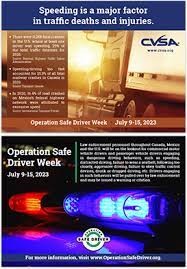The FMCSA requires all interstate carriers to file a MCS-150 or MCS-150B, if a Safety permit is required, every 24 months based on the last two digits of the US DOT number. The last digit of the number dictates the month and the second to last digit dictates the year. If the second to last digit is even you report in even number years, an odd digit, you report in odd number years. Now if there has been a change to your operation, increase in units, change of address, etc. you can file at any time and is recommended. You can file your MCS-150 online, fax or mail. A motor carrier that submits similar information to a State as part of its annual vehicle registration requirement under the Performance and Registration Information System (PRISM) complies if it files this information with the appropriate State commercial motor vehicle (CMV) registration office. The Motor Carrier Identification Report, Form MCS-150, and the Combined Motor Carrier Identification Report and HM Permit Application, Form MCS-150B, with complete instructions, are available from the FMCSA website: (Keyword "MCS-150" or "MCS-150B"); from all FMCSA Service Centers and Division offices nationwide; or by calling 1-800-832-5660. The report can be updated online at www.fmcsa.dot.gov or by faxing the form to the FMCSA at 703-280-4003.
So, how do I determine when the last time my MCS-150 was updated?
One easy way is to go to the FMCSA safer website.
Enter your DOT # then look at your company snapshot. You will see your “FMCSA Form Date” on the left side of the report.
If it is older than two years…. update your MCS-150 ASAP. You can update it right from the above snapshot by hovering your cursor over FMCSA Form Date and click on the link.
- When am I required to file a biennial update?
- The compliance date for this requirement (49 CFR 390.19) occurred November 1, 2013. Filing schedule: Each motor carrier or intermodal equipment provider must file the appropriate form at the... Date Updated: 06/23/2020
- Is an entity required to file a biennial update if there is no change to its information?
- Yes. All entities with a USDOT number are required to file a biennial update every two years according to the prescribed schedule, by the last day of the month. You can file a biennial update... Date Updated: 03/31/2020
- Will entities be notified before a biennial update is due?Yes. Beginning November 1, 2013, FMCSA is issuing a warning letter by mail to the address on file at least 30 days in advance of a biennial update deadline.Date Updated: 09/24/2019
- Can I go into my local FMCSA Division office to update my US DOT number?No, MCS 150 updates must be done either online, fax or by mail: Online: If your USDOT number is active, you can begin the online update process. By email: You can upload a signed... Date Updated: 01/25/2018
- How do the biennial update changes in the URS rule affect motor carriers, HMSP applicants/holders, and intermodal equipment providers?Very little. Motor carriers, Hazardous Materials Safety Permit applicants/holders and intermodal equipment providers are already required to update their registration information every 24 months... Date Updated: 11/21/2017
- How do you complete the biennial update? Biennial updates can be completed online, by email, by mail, or by fax. Online: If your USDOT Number is active, you may update your registration online. Detailed instructions are... Date Updated: 05/05/2017
- What are the penalties for failure to submit the biennial updates?Failure to complete biennial updates to FMCSA will subject the entities to civil penalties of up to $1,000 per day with a maximum penalty of $10,000. Certain for-hire carriers of passengers and... https://www.fmcsa.dot.gov/registration/updating-your-registration#biennial-updates.
What are you doing to retain the good drivers that you have today?
The following are some tips for consideration to retain the good drivers you have:
- Review for your company policies and procedures for honesty with your drivers. Make sure the policies are forthright and achievable by your drivers. The number one reason a driver leaves the employment of a motor carrier is that the driver feels that the company has been dishonest with them.
- Drivers need to be recognized as an asset to the company and a valued part of the company in all aspects of their operations and performance.
- Involve drivers in the operations of your company on a regular basis, i.e.: equipment selection, accident review committees, policy and procedure issues, customer service relationships etc. Develop a relationship with your drivers, know who they are, show a genuine concern for their welfare and longevity with the company. This relationship should be consistent from the top management and ownership down.
- Review your pay and benefit programs to make sure they are competitive in the industry.
- Keep your vehicle maintained with a systematic maintenance and inspection program that insures a safe operating unit for your driver.
- Provide ongoing training. It has been proven that drivers that receive training and are elevated in position are less likely to leave your company.
- Strictly adhere to your driver hiring and selection standards. Qualified, experienced drivers to not want to be associated with a company that hires substandard drivers.
- Provide a structured and comprehensive new driver orientation-training program. Drivers need to know the policies and procedures of the company prior to being placed into service. If the driver is informed of polices-procedures after being placed into service they will likely terminate, as they do not know what other polices-procedures they will be required to comply with in their job later on.
- Recognize drivers for their achievements and performance. Safe driving awards, longevity awards, customer service, etc. Provide the drivers with recognition that they cannot get anywhere else. The recognition should be personalized to the driver. Coats with their name and achievement, decals for the side of their units with their first name and achievement, plaques, etc. All driver recognition should take place with other drivers as their peers in attendance.
- When a driver terminates employment, conduct an exit interview. This can be done in person or send a self addressed stamped envelope to the driver with a written evaluation to be completed. Try to determine what the actual reason for the driver leaving your employment.
Hands-Free Cellphone Use: A Dangerous Distraction
There are several types of driver distraction:
- Visual – takes your eyes off the road. This can include looking for something in the vehicle, electronic devices or reading advertising along the road.
- Manual – takes your hands off the wheel. Smoking, eating and drinking in the vehicle are common manual distractions.
- Auditory – keeps you from hearing important sounds from outside the vehicle. Driving while wearing headphones, talking to passengers or playing music loudly fall into this category.
- Cognitive or Mental – takes your mind off of driving. Stress is a big contributor to this area as we think about our day and get lost in our thoughts.
Cell phones are unique from other forms of driver distraction because they usually involve all forms of distraction. Many people tend to focus on visual and manual distractions. However, mental distraction is very risky because people do not always recognize they are mentally distracted, and this distraction lasts much longer than the other types. There is a false perception that hands-free phones are safer than handheld. But research has found no safety benefits to hands-free use. Think about how often you turn down the volume on the radio when looking for a specific address!
Risks of Driving While Talking on a Cellphone:
- Four times as likely to be in crashes resulting in injury or property damage
- More likely to commit driver errors and traffic violations
- Slower reaction time than drivers impaired at the 0.08 alcohol concentration level
- Looking but failing to see up to 50 percent of the driving environment
- More than one-third of the brain's processing resources are drawn away from driving tasks
Operation Safe Driver Week
Operation Safe Driver Week is a safe-driving awareness and outreach initiative aimed at improving the driving behaviors of passenger vehicle drivers and commercial motor vehicle drivers through educational and traffic enforcement strategies and interactions with law enforcement.
The next Operation Safe Driver Week is scheduled for July 9-15, 2023
Throughout Operation Safe Driver Week, law enforcement personnel will look for commercial and passenger vehicle drivers engaging in risky driving. Identified unsafe drivers will be pulled over and issued a citation or warning.
Data shows that traffic stops and interactions with law enforcement help reduce problematic driving behaviors. By contacting drivers during Operation Safe Driver Week, law enforcement personnel aim to make our roadways safer by targeting high-risk driving behaviors.
- Speeding has been a factor in over a quarter of crash deaths since 2008. (Source)
- Speeding of any kind was the most frequent driver-related crash factor for drivers of commercial motor vehicles and passenger vehicles. (Source)
- Speeding was a factor in 26% of all traffic fatalities in 2018, killing 9,378 people or an average of more than 25 people daily. (Source)
- Distracted driving claimed 3,142 lives in 2019. (Source)
- Of the 22,215 passenger vehicle occupants killed in 2019, 47% were not wearing seat belts. Seat belts saved an estimated 14,955 lives and could have saved an additional 2,549 people if they had been wearing seat belts in 2017 alone. (Source)
- Every day, about 28 people in the United States die in drunk-driving crashes — that’s one person every 52 minutes. In 2019, 10,142 people lost their lives due to drunk driving.










